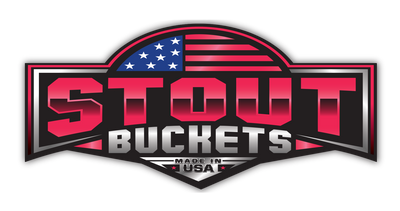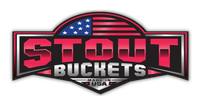Avoid These Mistakes When Choosing Skid Steer Attachments

Picking the right skid steer attachments can make a significant difference in your project’s success. Professional skid steers operators often face the challenge of selecting the most suitable attachments for their needs. Stout Buckets is here to help you avoid these mistakes when choosing skid steer attachments so that things go more smoothly and efficiently in the long run.
Misunderstanding Attachment Compatibility
One of the most common mistakes in selecting skid steer attachments is misunderstanding compatibility. Not all attachments fit every skid steer model, so it’s important to verify your machine and attachment specifications. Failing to do so can lead to operational inefficiencies or even damage.
Checking the manufacturer’s guidelines is a good starting point. These guidelines often contain detailed information on compatible attachments. Matching the hydraulic flow rate and pressure between the skid steer and the attachments ensures smooth operation. Ignoring these specifications can result in reduced performance and increased wear and tear.
Talking to a dealer or consulting a knowledgeable source of information can provide valuable insights. They can help you confirm compatibility and even suggest better-suited attachments for your specific needs. It may seem like work, but taking the time to take this extra step can save you time and money in the long run.
Overlooking Hydraulic Requirements
Hydraulic requirements are another critical factor that people often overlook. Different attachments have varying hydraulic needs, and mismatched hydraulics can severely affect performance. You want to ensure your skid steer’s hydraulic system meets the attachment’s requirements for optimal functionality.
Understand the attachment’s flow rate and pressure demands. It will inefficiently operate if it requires more hydraulic power than your skid steer can provide. You risk causing permanent damage to the attachment or even ruining it beyond repair if the skid steer’s hydraulic output exceeds what the attachment can handle.
Regularly inspecting and maintaining your skid steer’s hydraulic system can prevent issues. Proper maintenance ensures that the skid steer and its attachments operate efficiently and extend their lifespans. Taking the initiative with these hydraulic requirements can significantly enhance your project’s productivity.
Ignoring the Weight and Balance
Ignoring the attachments’ weight and balance can lead to serious problems. A mismatched attachment can destabilize your skid steer, posing safety risks. Always check the attachment’s weight and ensure it aligns with your skid steer’s capacity.
The center of gravity is another crucial aspect to consider. An improperly balanced skid steer can tip over, especially when lifting heavy loads. Understanding how the attachment affects the machine’s balance can prevent accidents.
Performing a test run with the new attachment can provide insights into how it impacts the skid steer’s stability. This practice allows you to make necessary adjustments before fully deploying your project’s attachment. You should always take the time to ensure proper weight and balance, as these factors can greatly impact safety and efficiency.

Neglecting Maintenance Needs
One of the biggest mistakes to avoid when choosing skid steer attachments is neglecting maintenance. Different attachments have varying maintenance requirements, and neglecting these can lead to premature failure. Understanding each attachment’s maintenance needs can save time and money and prevent more expensive repairs or replacements.
Some attachments require frequent lubrication, while others may need regular inspections for wear and tear. Knowing these requirements beforehand allows you to adequately prepare. Keeping a maintenance schedule can help you stay on top of these needs.
Understanding the specific maintenance procedures for each attachment is equally important. Proper training ensures you or anyone else who might be operating your skid steer knows how to care for the attachments, thereby extending their lifespan. Neglecting maintenance can lead to costly repairs and downtime, affecting your project’s overall success.
Focusing Solely on Price
Price is often a significant factor in purchasing decisions, but focusing solely on it can be a mistake. Cheaper attachments may save you money upfront but can cost you more in the long run due to lower quality and higher maintenance needs. Balancing cost with quality is essential.
High-quality attachments may seem expensive initially, but they offer better performance and longevity. These attachments can withstand rigorous use and require less frequent replacements. Over time, the higher upfront cost can translate into substantial savings.
Disregarding Operator Training
Operator training is crucial for the effective use of skid steer attachments. Even the best attachments can underperform if the operator does not have the necessary skills or training to use them.
Proper training covers various aspects, including installation, operation, and attachment maintenance. It equips operators with the knowledge to handle different scenarios, such as working on uneven terrain or managing heavy loads. Skilled operators can maximize the attachments’ capabilities, enhancing overall productivity.
Regular refresher courses can keep your team updated on the latest techniques and safety protocols. Continuous training fosters a culture of safety and efficiency, reducing the risk of accidents and downtime. Disregarding training can lead to suboptimal performance and increased operational risks.

Underestimating the Project’s Scope
You always want to make sure that you pick skid steer attachments that best work for your specific project. Different projects have unique requirements, and choosing the wrong attachment can hinder progress. Thoroughly assessing the project’s needs will help you make the right choice.
Consider the type of material you’ll be handling and the specific tasks involved. For example, pallet forks and grapple buckets transport materials and work better in different scenarios depending on what you’re moving.
Consulting project managers and operators can provide valuable insights into the project’s demands. Their firsthand experience can highlight potential challenges and the best attachments to tackle them. Properly assessing the project scope ensures you choose attachments that align with your goals.
Overlooking Versatility
Versatility is a key factor in maximizing your skid steer’s utility. Choosing attachments that serve multiple purposes can enhance your machine’s functionality. Many attachments have multiple functions, so choosing attachments that serve more than one purpose for your job can limit your expenses and how many you need to bring with you.
Multi-purpose buckets or combination tools can perform various tasks, reducing the need for multiple attachments. This versatility saves money and simplifies operations. A versatile attachment can adapt to different project requirements, offering flexibility.
Don’t let the common mistakes in choosing skid steer attachments hold you back from maximizing your project’s success. Stout Buckets has a range of heavy equipment attachments for sale that emphasize durability and versatility for your toughest jobs. Visit our website to explore our selection and start investing in the right attachments for your needs today!


